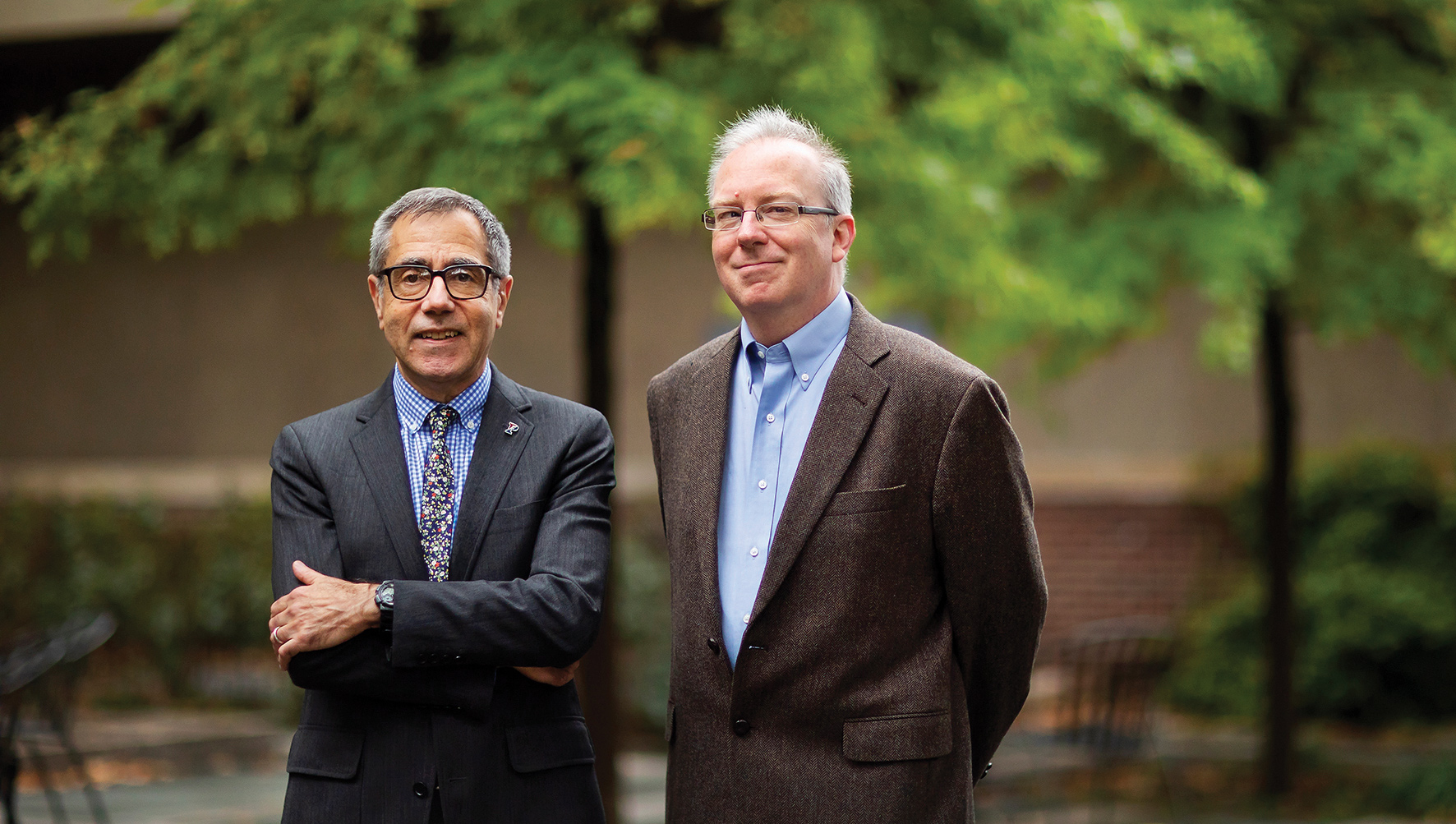Charles Kane and Eugene Mele, both Christopher H. Browne Distinguished Professors of Physics, have been recognized with two awards for their work on topology and symmetry in physics.
As the recipients of the 2019 Breakthrough Prize in Fundamental Physics, Kane and Mele will share a $3 million award. They also received the 11th BBVA Foundation Frontiers of Knowledge Award in the Basic Sciences category. That award, with a €400,000 prize, will be presented at a formal ceremony in Bilbao, Spain, in June.
Kane and Mele have long collaborated, sharing ideas and predictions in their field of condensed matter physics. Their theoretical contributions introduced a new class of materials known as topological insulators. These materials have the unique characteristic of being electrical insulators on their interior, but also have surfaces that are conducting. This duality, many believe, could allow the incorporation of topological insulators into electronics with high efficiency, or provide a foundation for enabling super-fast quantum computing.
The properties and potential applications of topological insulators, including the miniaturization of electrical components without increased risk of overheating, represent a groundbreaking area of study in applied physics research.
“What drives me is the beauty of what nature can do,” says Kane. “Certainly major technical applications could emerge from this, but what fascinates me is discovering what nature can do with these seemingly simple building blocks. This topic arose out of curiosity about how matter could arrange itself. At the time, we had no idea it was going to develop into such a broad enterprise.”
Mele agrees: “What is so nice about this work is that the underlying thinking is very mathematical—elegant, simple, and pretty. And that fusion of an underlying mathematical, simple structure and its connection with things that have a real-world technical payoff is what we are striving for in science.”





